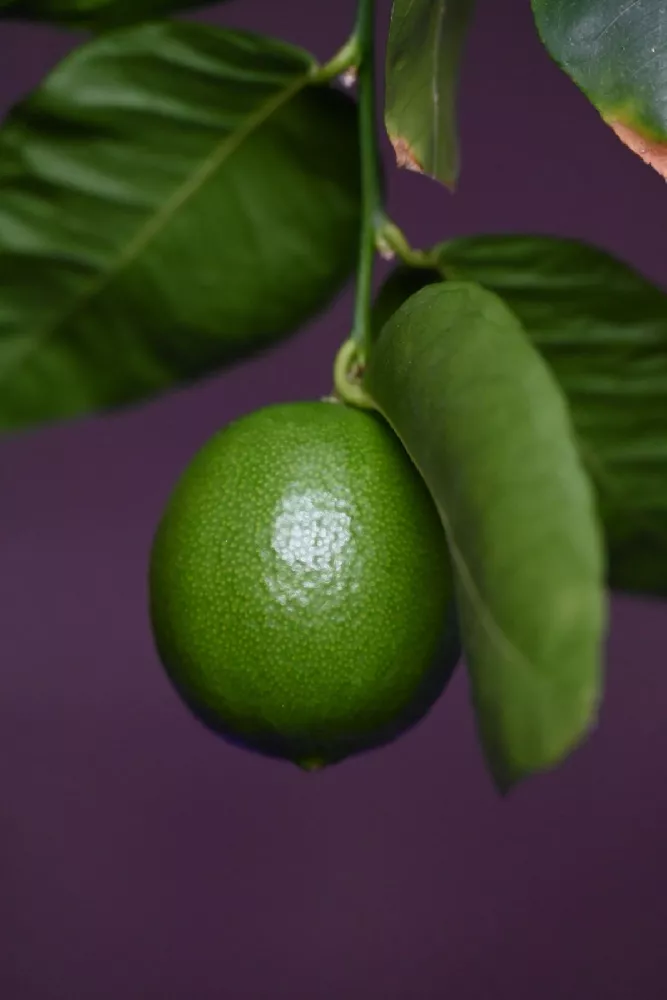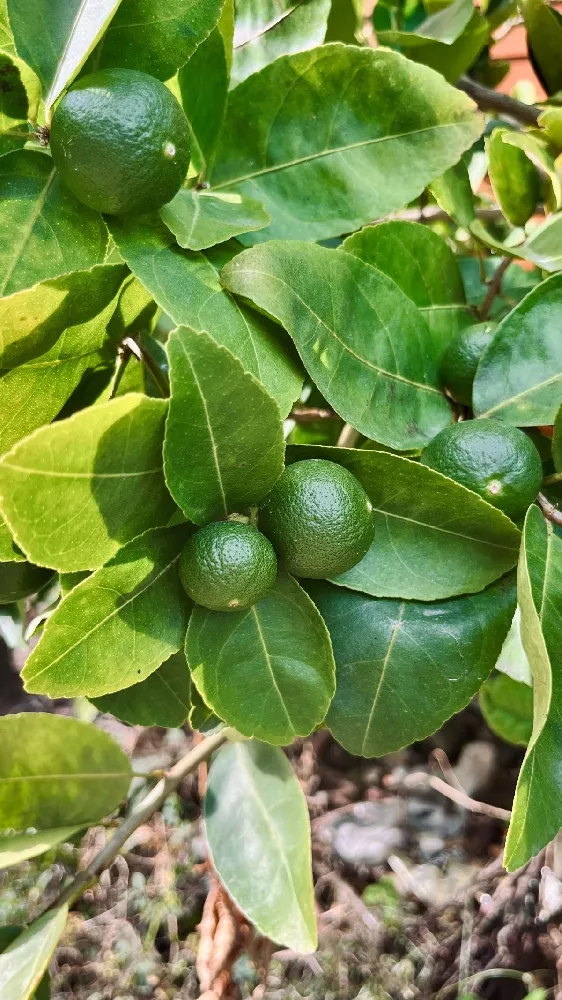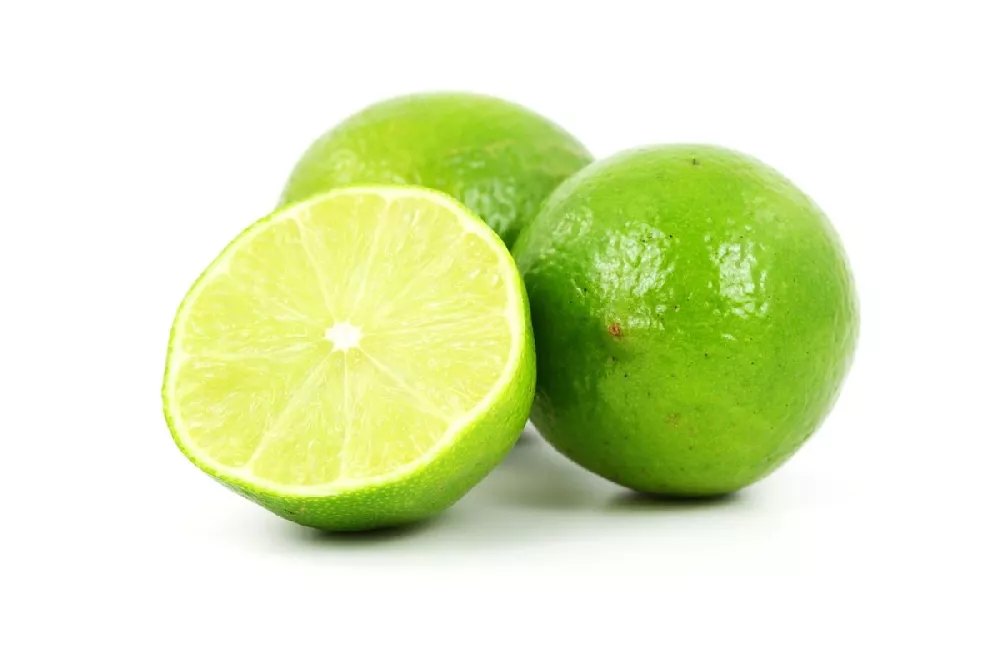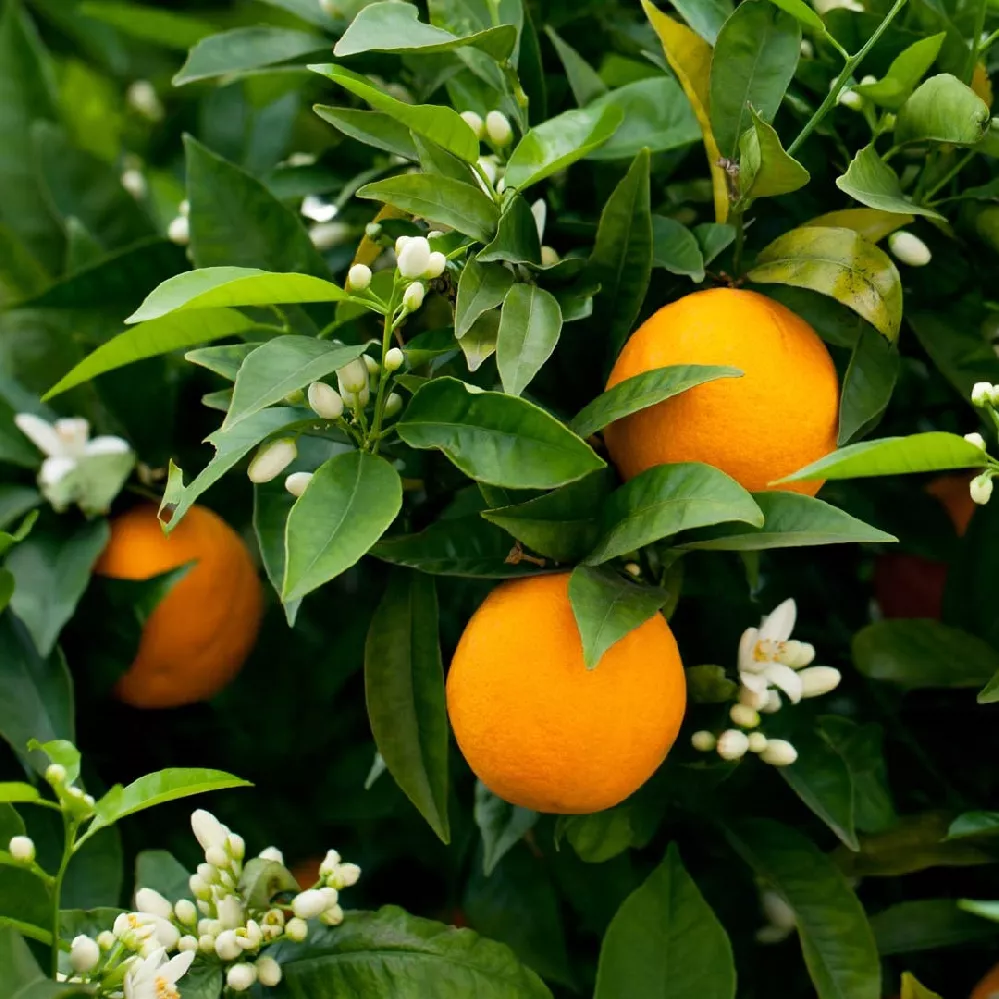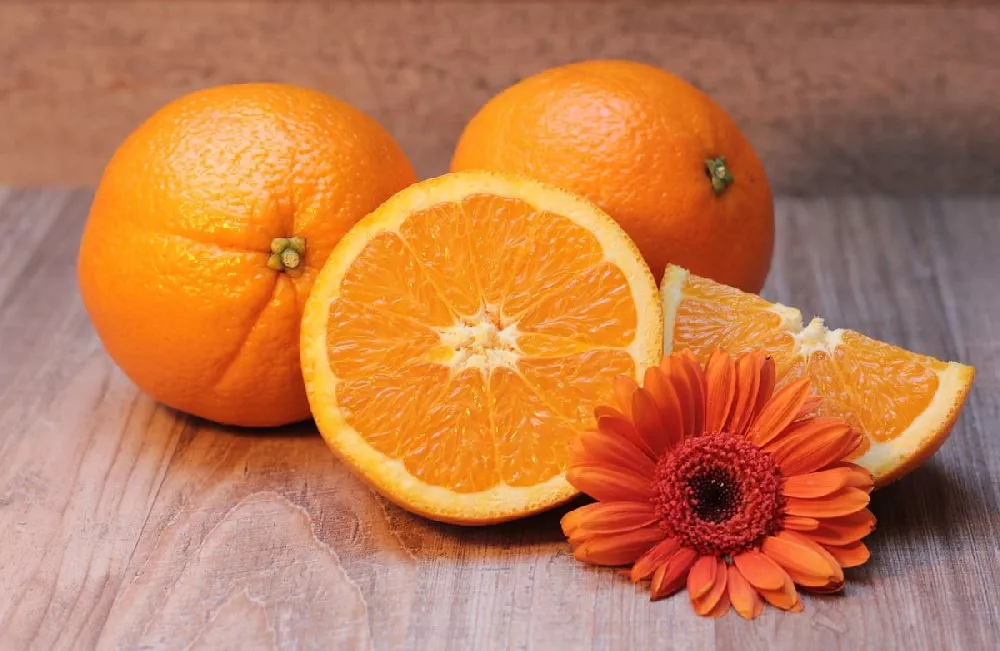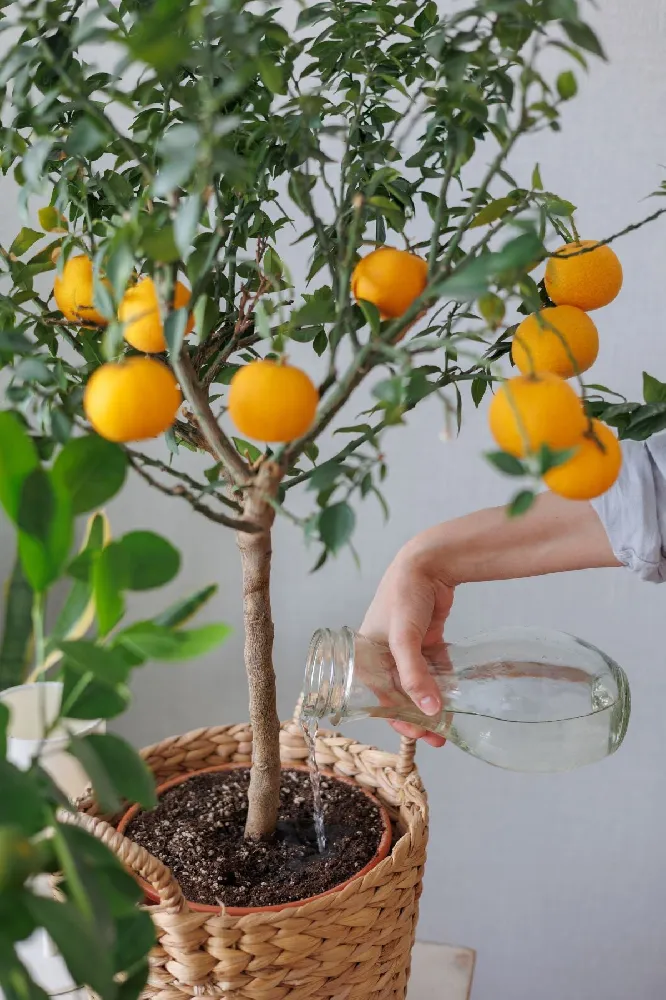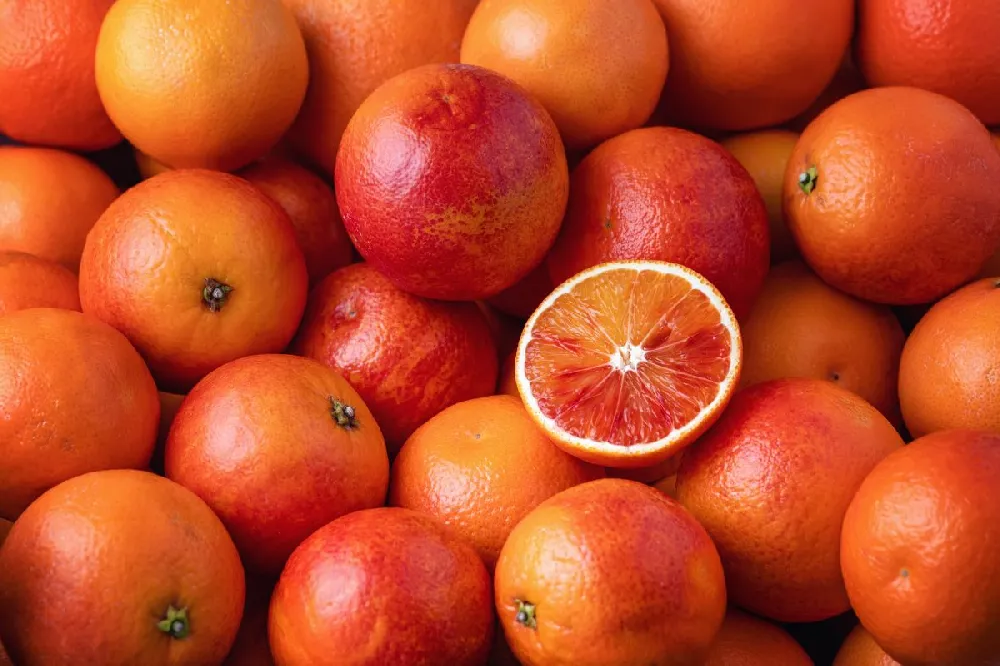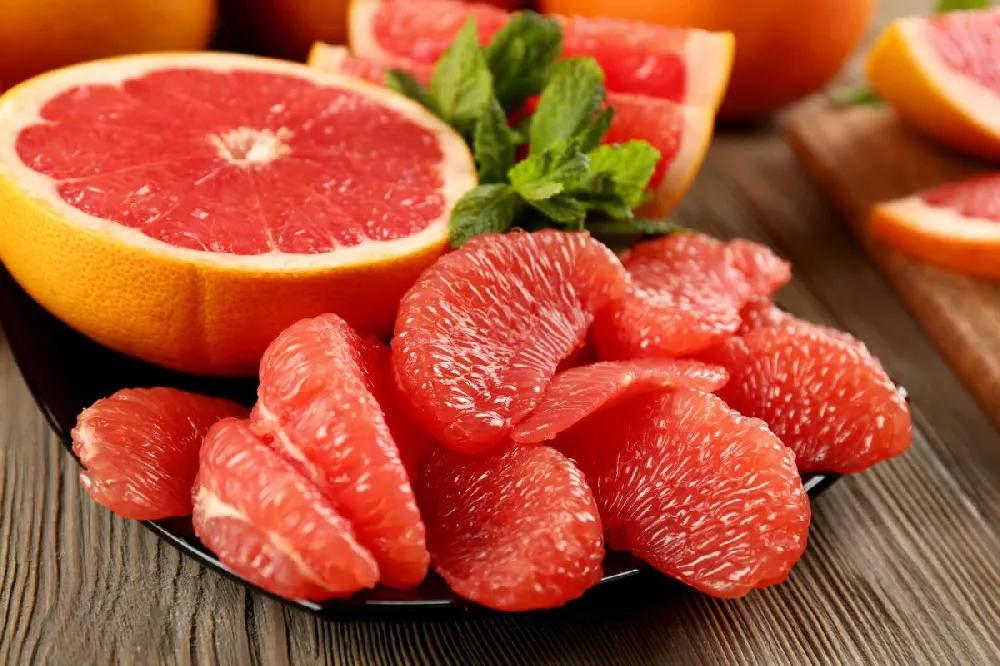- Home >
- Fruit Trees >
- Persian ‘Bearss’ Lime Bush
Persian 'Bearss' Lime Bush for Sale - Buying & Growing Guide
Growing one of the world's most popular citrus fruits in your yard is easier than you might guess. All you need to do is plant a Persian 'Bearss' Lime Bush or Citrus latifolia, and soon you'll enjoy a harvest of seedless limes every year. But, despite offering such valuable fruits, the value of this plant does not end there, as it holds lush leaves throughout the year and blooms with lovely white flowers.
- The fruits of the Persian 'Bearss' Lime Bush are seedless and delicious.
- This plant has a small mature size, which means it can grow in a container.
- Both the foliage and flowers of this plant can be quite attractive.
Enter your zip code to find nearby stores that may carry this plant.
Plant Care
Sunlight

The Persian 'Bearss' Lime Bush requires a growing location that receives full sunlight.
Watering
Water weekly during establishment. After establishment, water this plant whenever the first two inches of soil are dry.
Fertilizing

Fertilize every other month during spring and summer using a citrus-specific fertilizer blend.
Planting and Care
Planting instructions
Plant your Persian ‘Bearss’ Lime Bush in full sunlight and well-draining soil. While this plant can grow in the ground, most gardeners should grow this plant in a container to allow for overwintering. Typically, this plant will not survive in temperatures below 40 degrees Fahrenheit. If you use a container, ensure that it is considerably wider than the root ball and allows for great drainage. If you live in a warmer region, plant this bush in the ground by digging a hole that is as deep as the root ball is tall and about twice as wide.
Watering and nutrients
Typically, it is best to water a Persian ‘Bearss’ Lime Bush whenever the first two inches of soil have become dry. However, while this plant is in its establishment phase, you should water it about once per week or more to maintain consistent soil moisture. You should feed this plant about once every other month throughout the entire spring and summer seasons. Generally, any fertilizer that the manufacturer has created specifically for citrus plants should serve your Persian ‘Bearss’ Lime Bush well.
Pollination
Since fruit production is the main goal of growing a Persian ‘Bearss’ Lime Bush, successful pollination is crucial. This plant is self-fertile, meaning that you’ll need only one to produce fruits. When growing outdoors, a Persian ‘Bearss’ Lime Bush will attract insects to its flowers to conduct pollination. However, if you grow this plant indoors, it is best to hand pollinate since pollinator insects will not be present. Additionally, planting two Persian ‘Bearss’ Lime bushes and allowing for cross-pollination often leads to larger harvests.
Pruning
You should prune your Persian ‘Bearss’ Lime Bush regularly to remove any branch that is dead, damaged or diseased. The ideal time to prune this plant is during the early spring, but it is alright to perform light pruning during most of the year. When this plant is young, you can perform some heavy pruning to remove nearly all of the plant’s minor branches, leaving only the main stems that contribute most to the overall form and will be most capable of holding fruits later during harvest.
Pests, diseases and animals
When a Persian ‘Bearss’ Lime Bush enjoys its preferred growing conditions, it is likely to remain healthy and free of pests and diseases. With that said, insects, particularly aphids, mites and leaf miners can infest this plant, at times leading to infections of black sooty mold and similar diseases. When heavy clay soils or any conditions that prevent proper drainage are present, diseases that affect the fruits and foliage of your Persian ‘Bearss’ Lime Bush can also become an issue.
Harvesting
Harvest for a Persian ‘Bearss’ Lime Bush arrives in summer, and there are several signs that reveal which fruits are ripe and ready for picking. First, a ripe lime will be entirely dark green while often giving off a subtle lime scent. Ripe limes are firm overall but have a slight bit of softness if you give them a squeeze with your fingers. Keep in mind as well that heavier fruits on your Persian ‘Bearss’ Lime Bush often have more juice, but limes can get heavy enough to fall off the branch before you pick them.
Achieving maximum results
The Persian ‘Bearss’ Lime Bush enjoys living in a humid environment. However, most indoor growing locations will be far too dry for this plant. One of the best ways to remedy that issue is to mist it regularly to simulate the air moisture that it prefers. Also, when growing this plant indoors, you should select a growing location that is near an unobstructed south-facing window to ensure that your Persian ‘Bearss’ Lime Bush gets all the sunlight it needs.
FAQs
When should you bring a Persian 'Bearss' Lime Bush indoors for overwintering?
The Persian 'Bearss' Lime Bush can survive temperatures down to 40 degrees Fahrenheit and sometimes down to 30 degrees Fahrenheit. Despite that, you should not allow this plant to experience such low temperatures. Rather than waiting for a specific month to bring this plant indoors, simply overwinter this plant when outdoor temperatures are consistently in the 50-degree range, then wait for the weather to rise above that range to bring the plant back outdoors in spring.
Does the Persian 'Bearss' Lime Bush have thorns?
Several citrus plants, including some types of lime trees, have thorns that can add some difficulty to pruning and general maintenance tasks. Fortunately, the Persian 'Bearss' Lime Bush is a cultivated lime variety that is nearly free of thorns entirely. You may occasionally find a thorn on this plant, but overall, the development of this plant was successful in ridding it of those sharp points.
Is the Persian 'Bearss' Lime Bush the most popular lime in the world?
There are a few popular types of limes throughout the world, but the Persian 'Bearss' Lime is perhaps the most popular of them all. By many metrics, Persian limes account for the largest share of limes sold globally, making them one of the most commonly bought and sold citrus fruits as well. The main selling points of the Persian lime are that it is slightly larger than other limes, full of a lot of juice and seedless.
Compare Similar Products
You can't add more Product Name - Product size to the cart.
OK